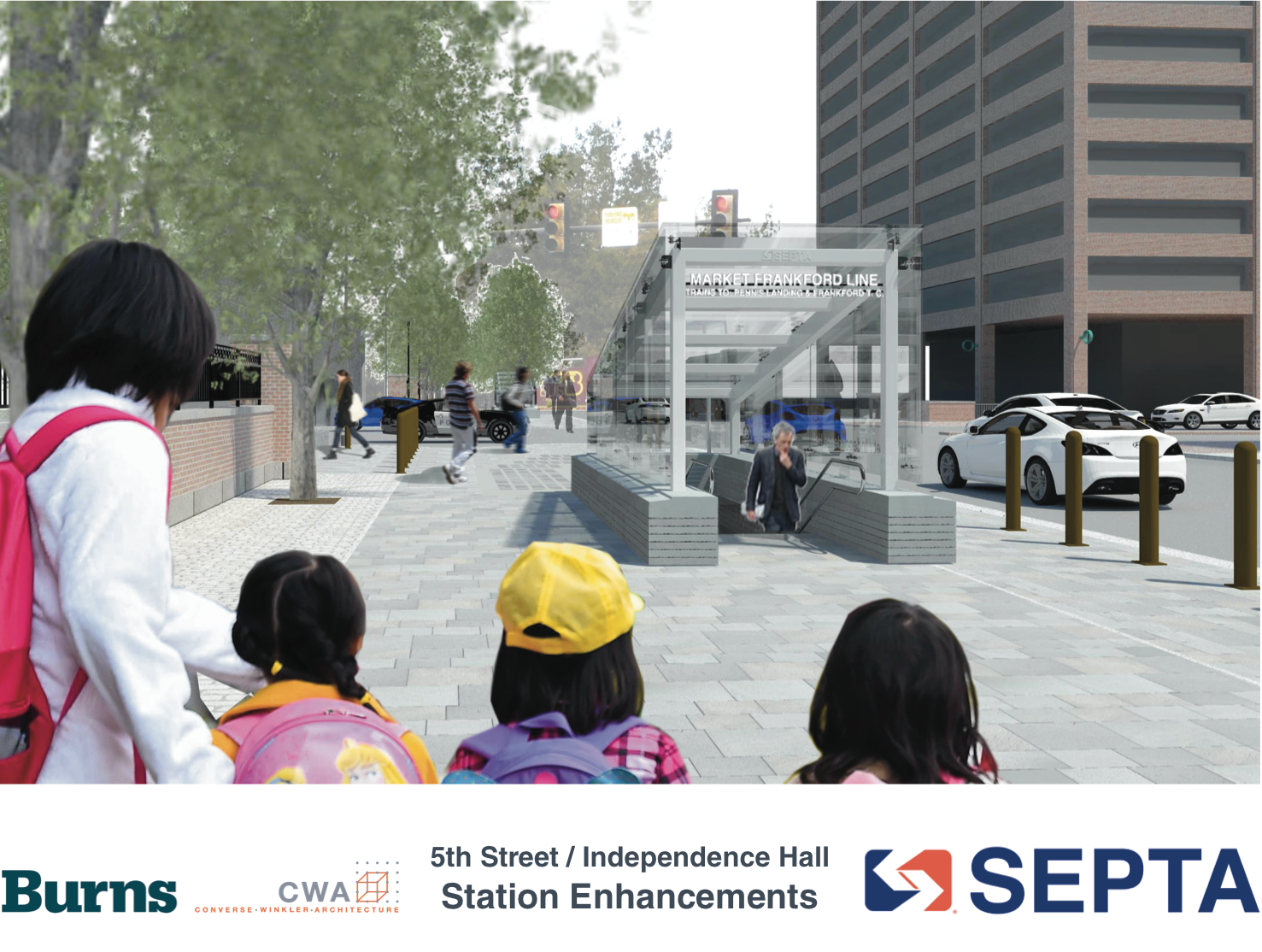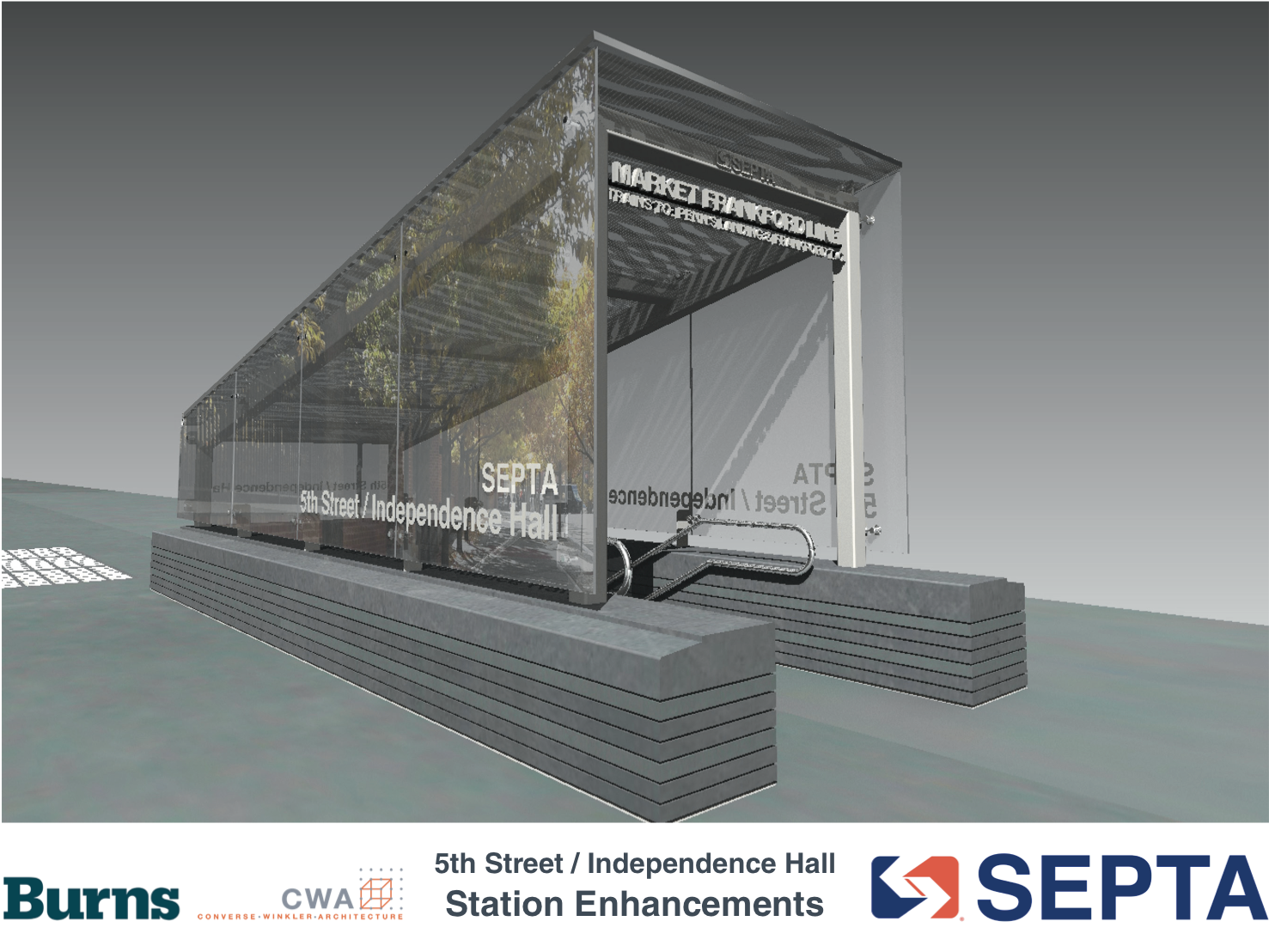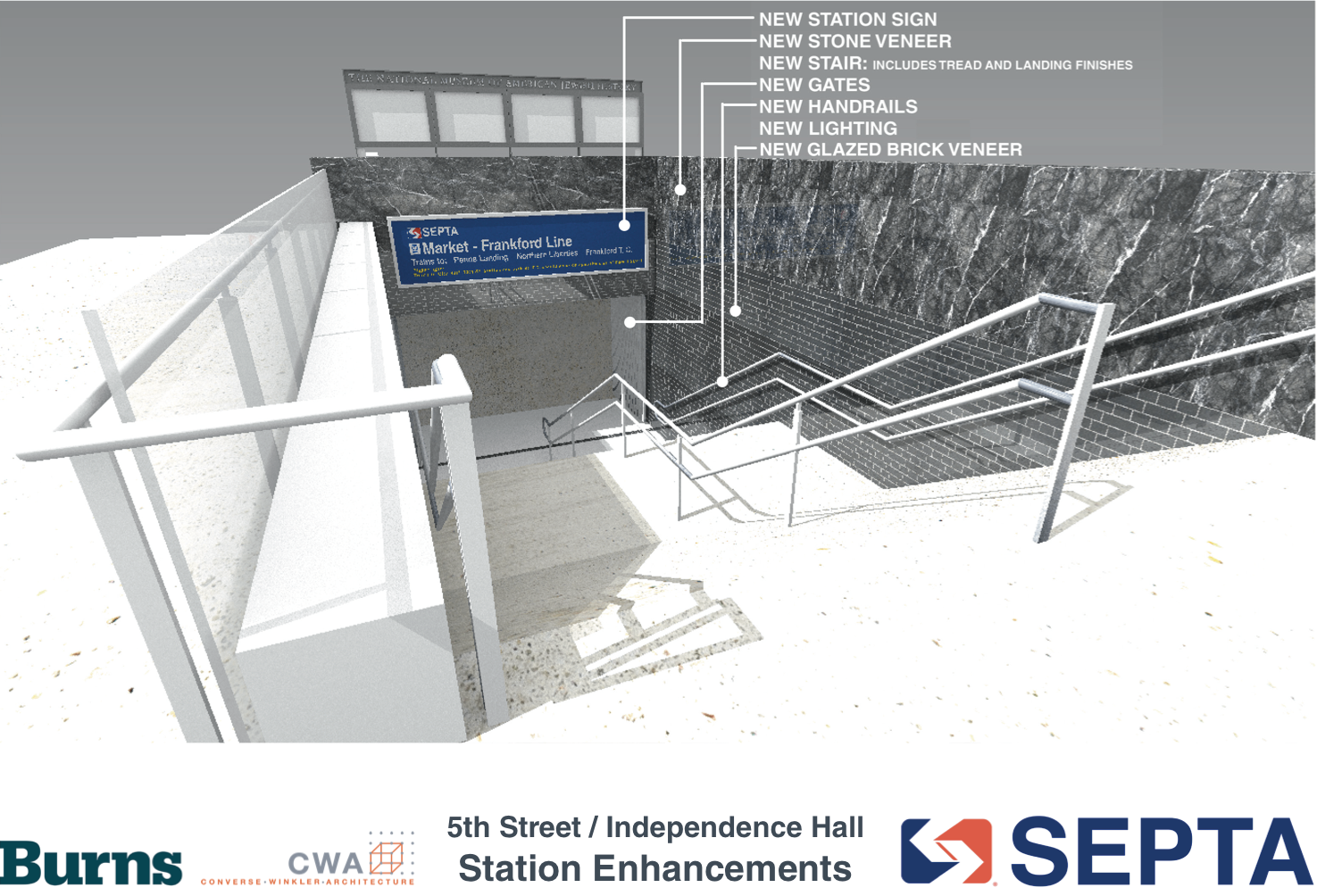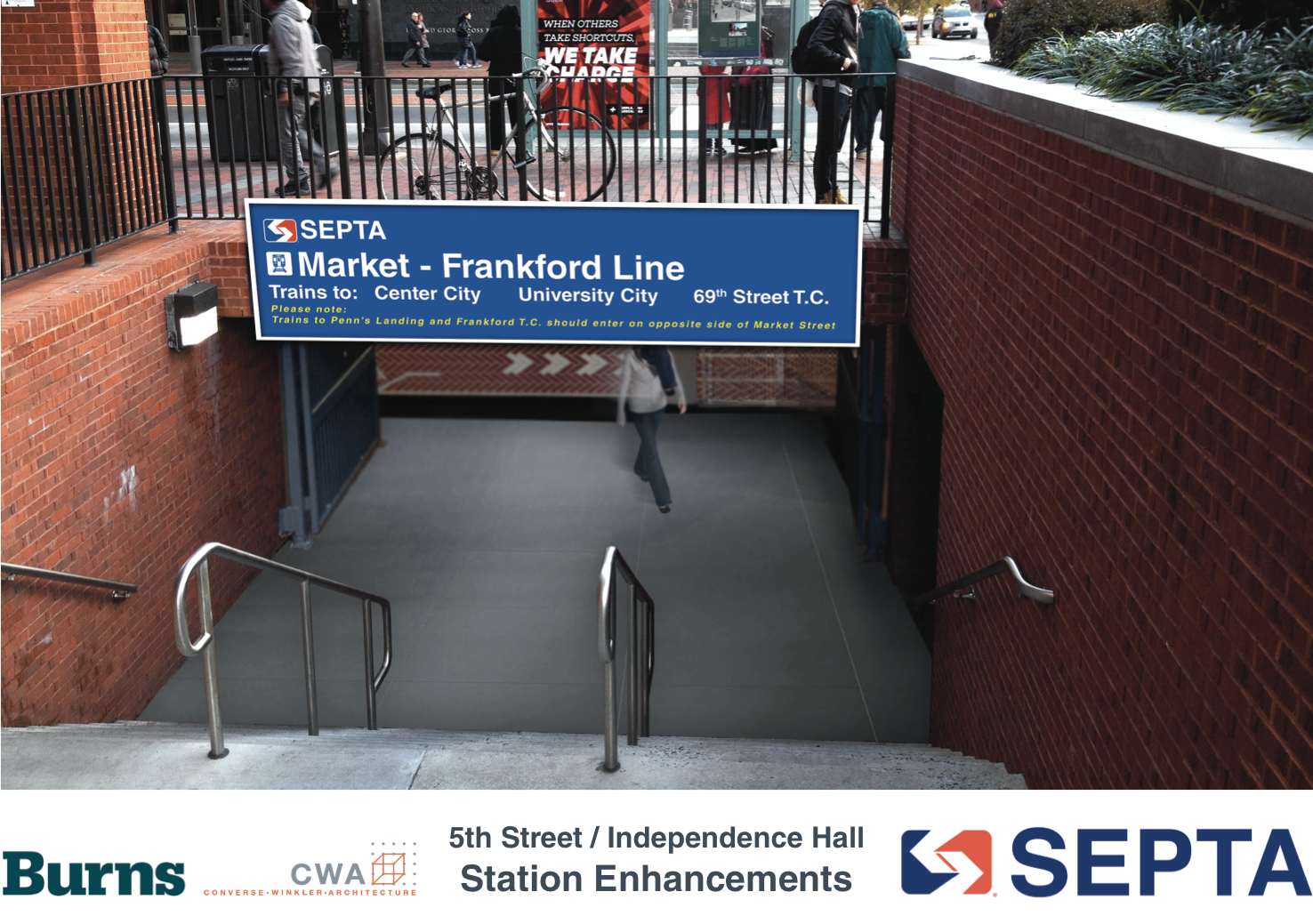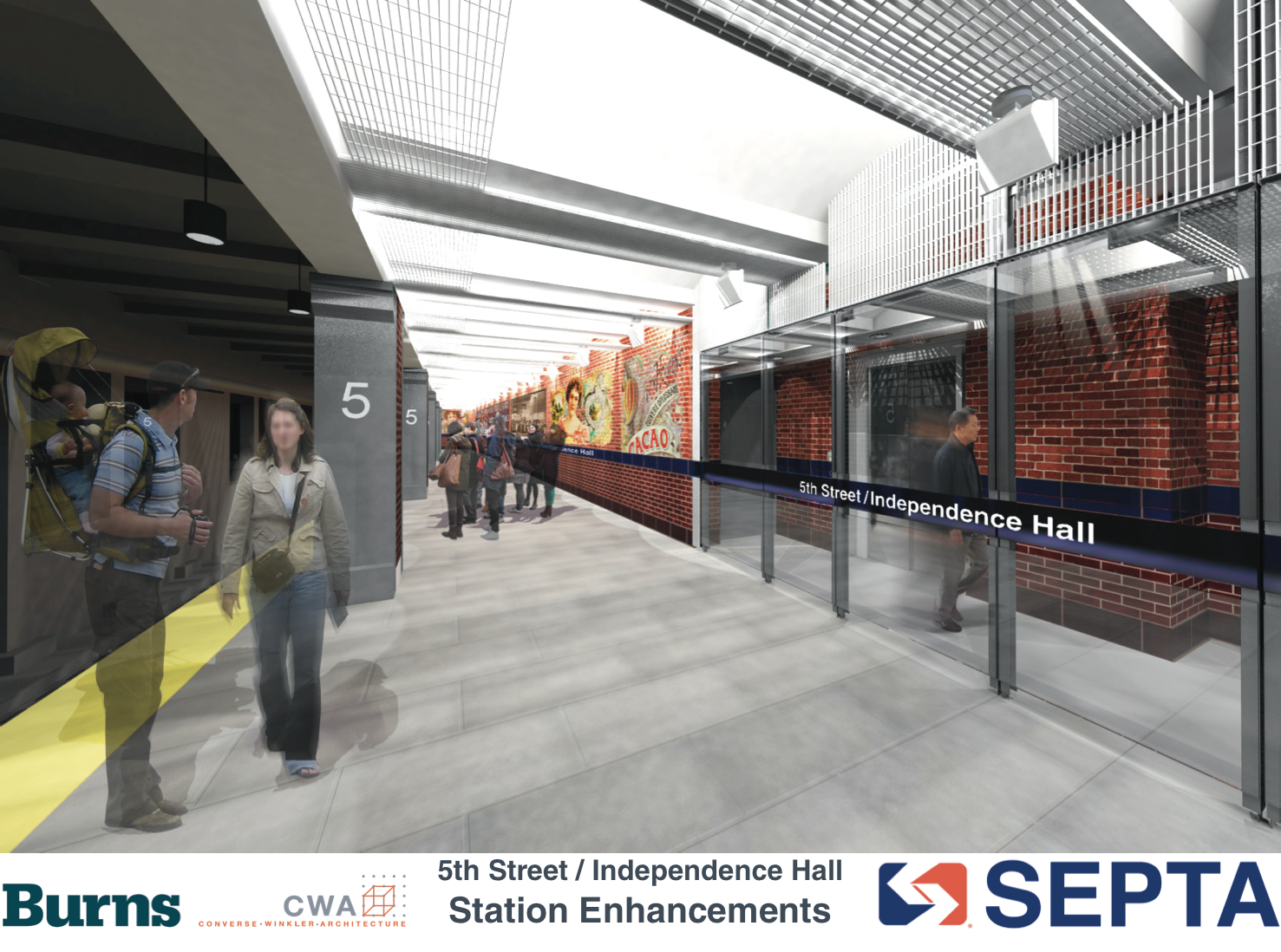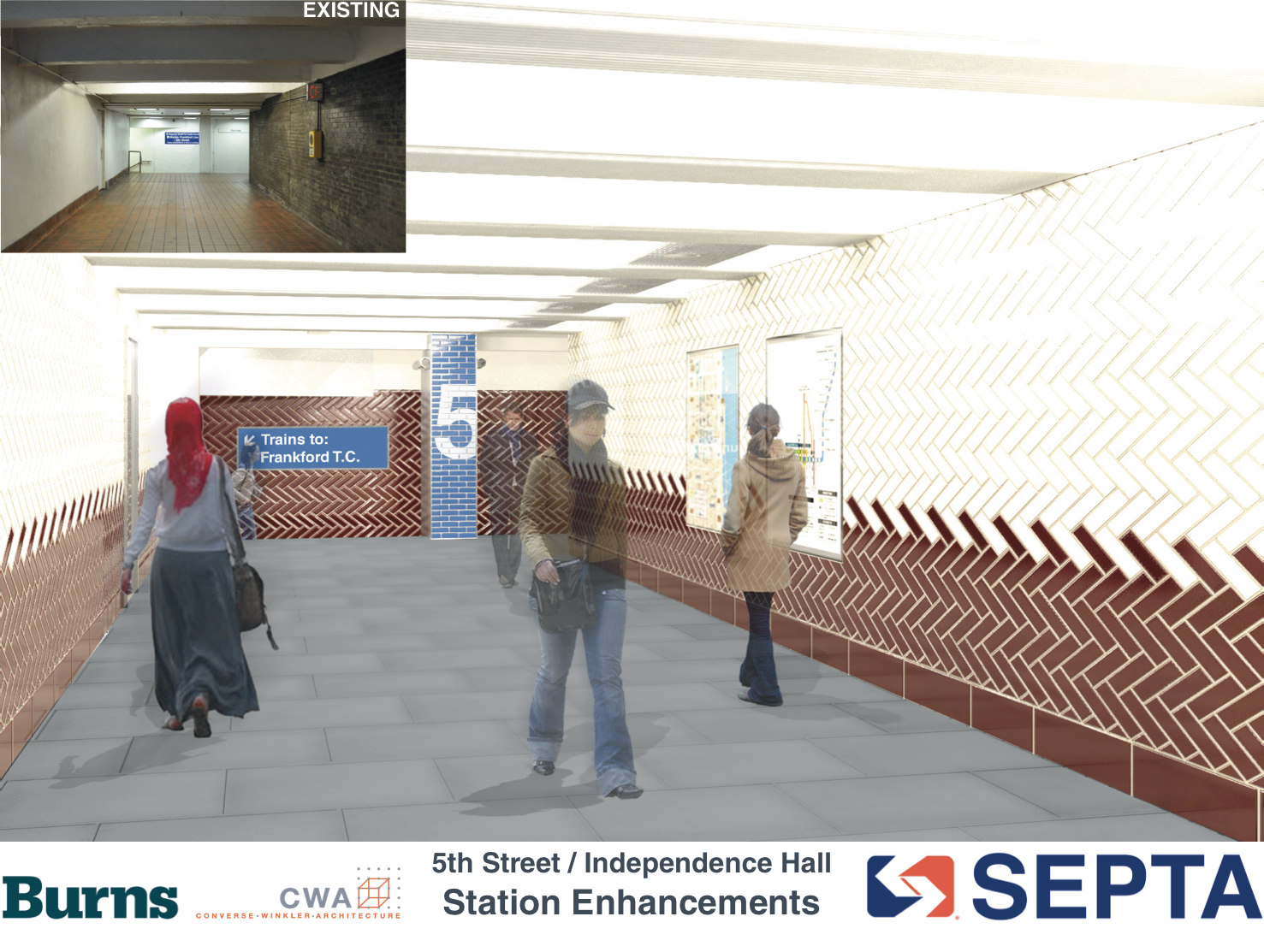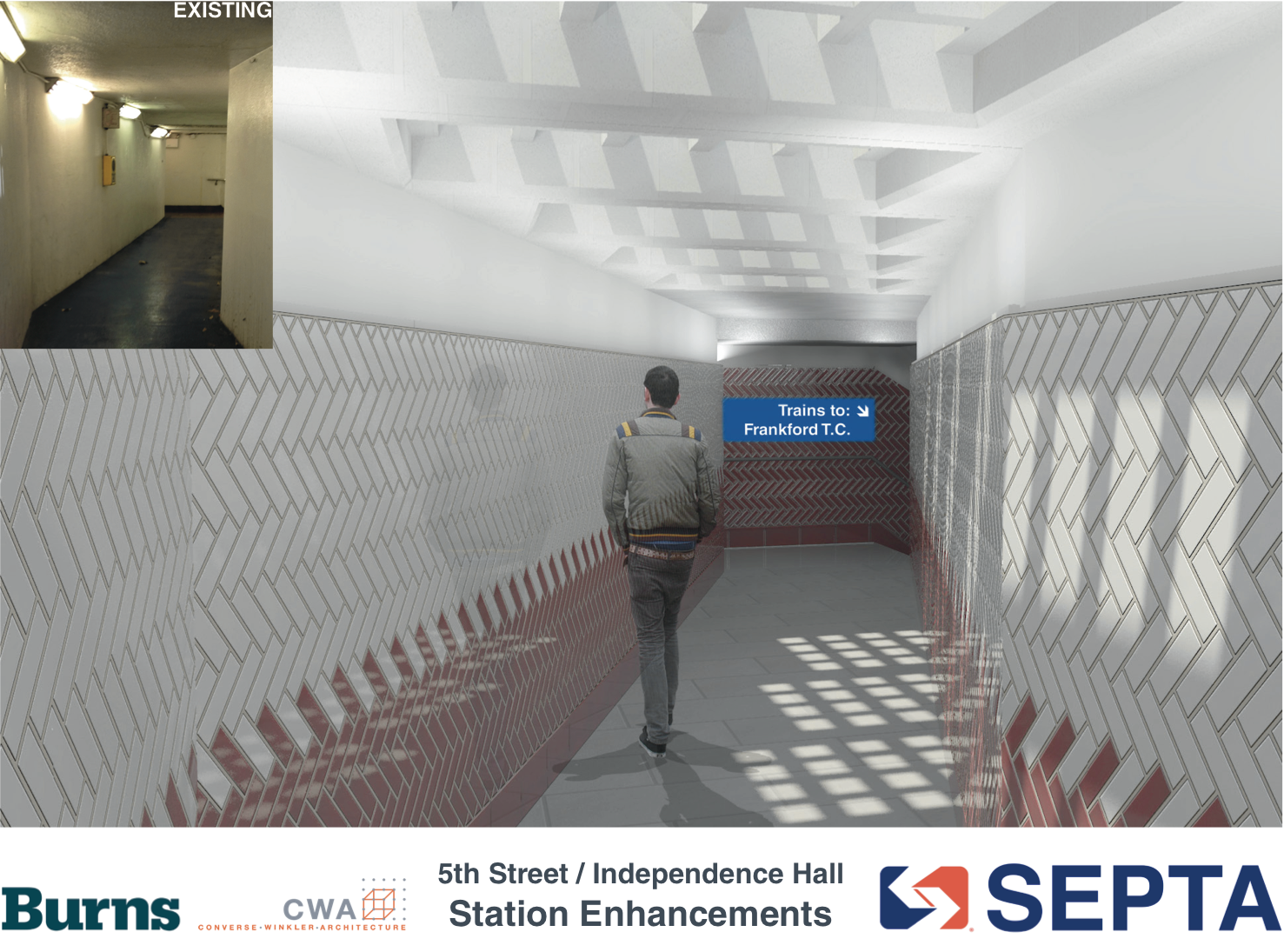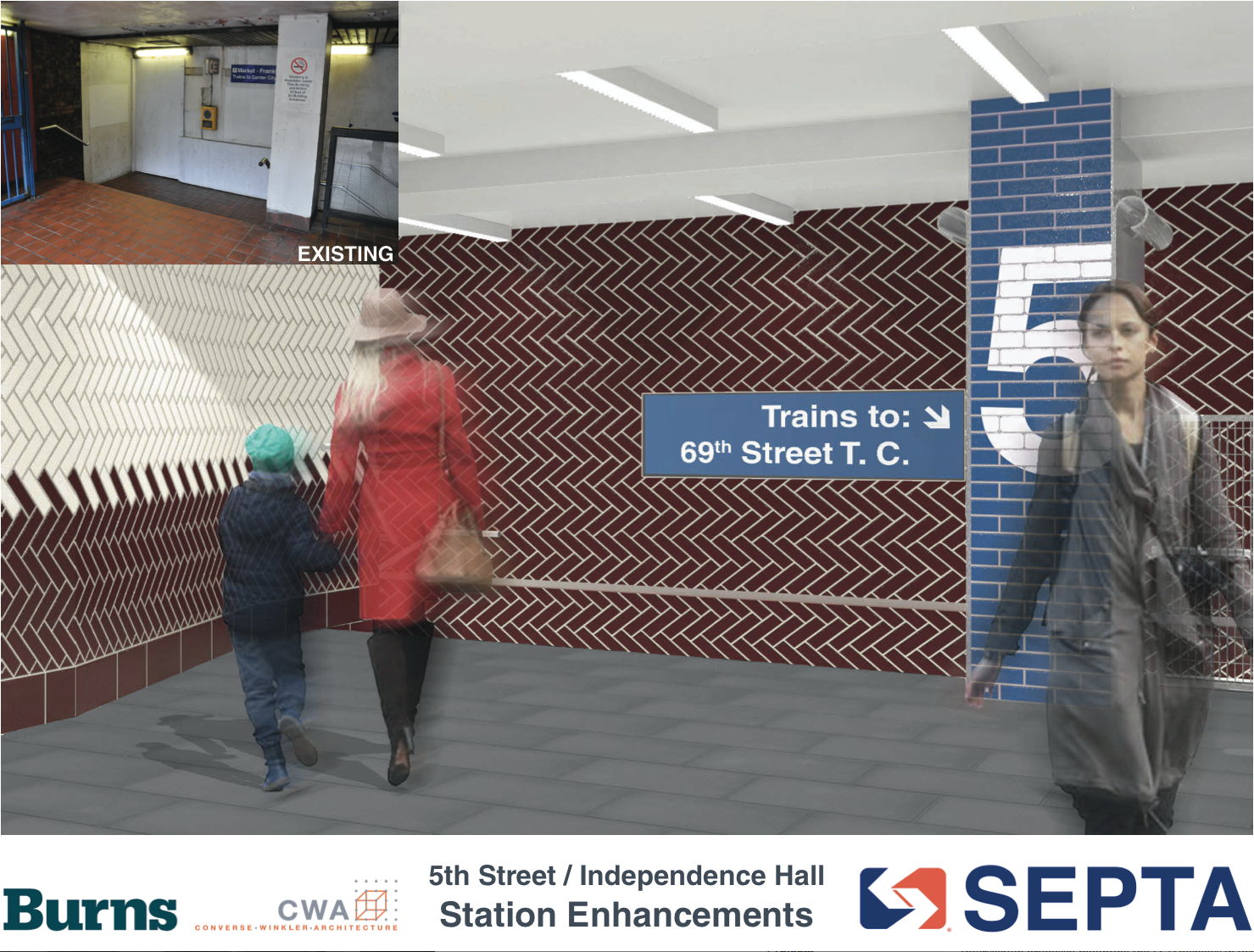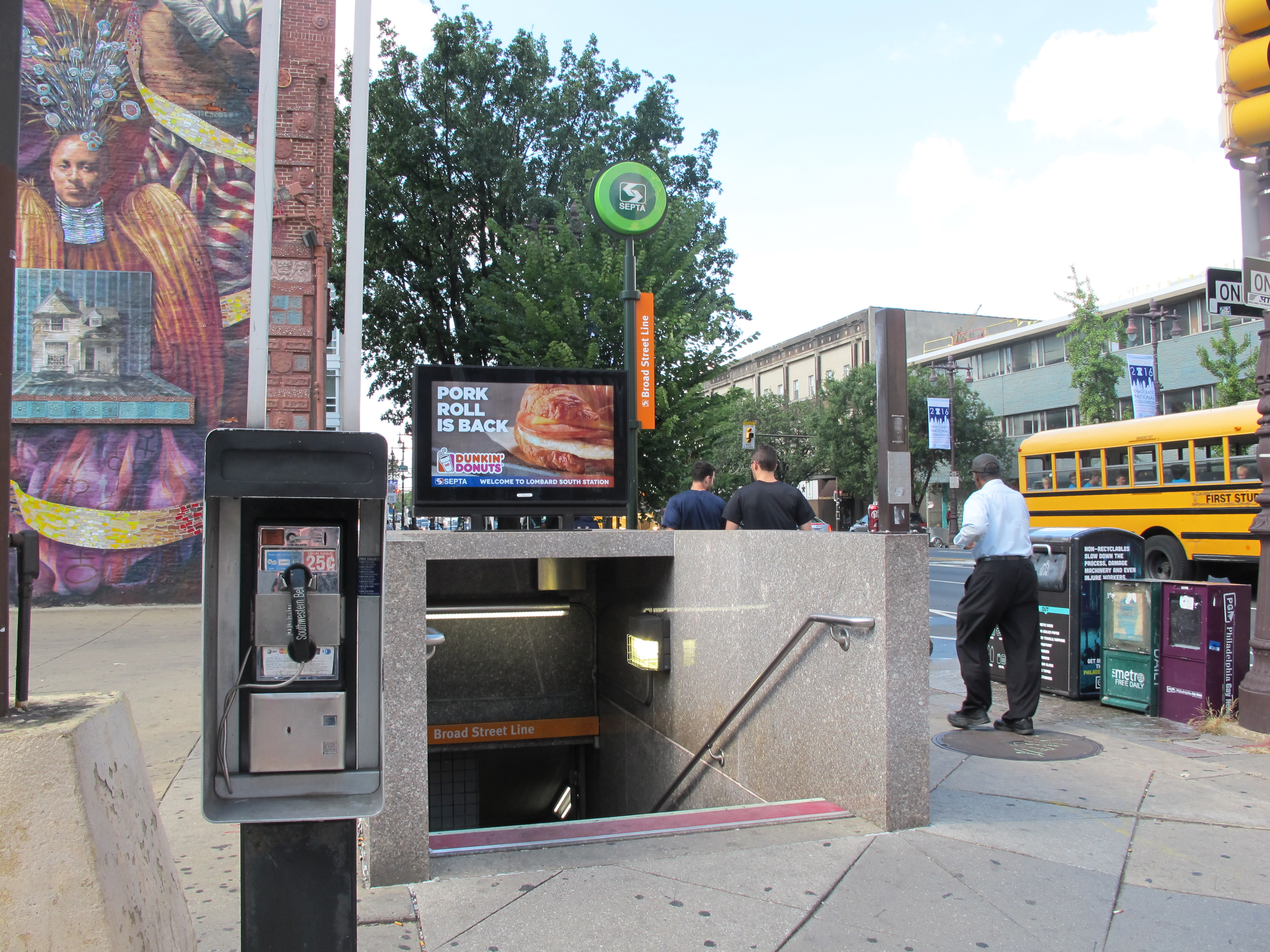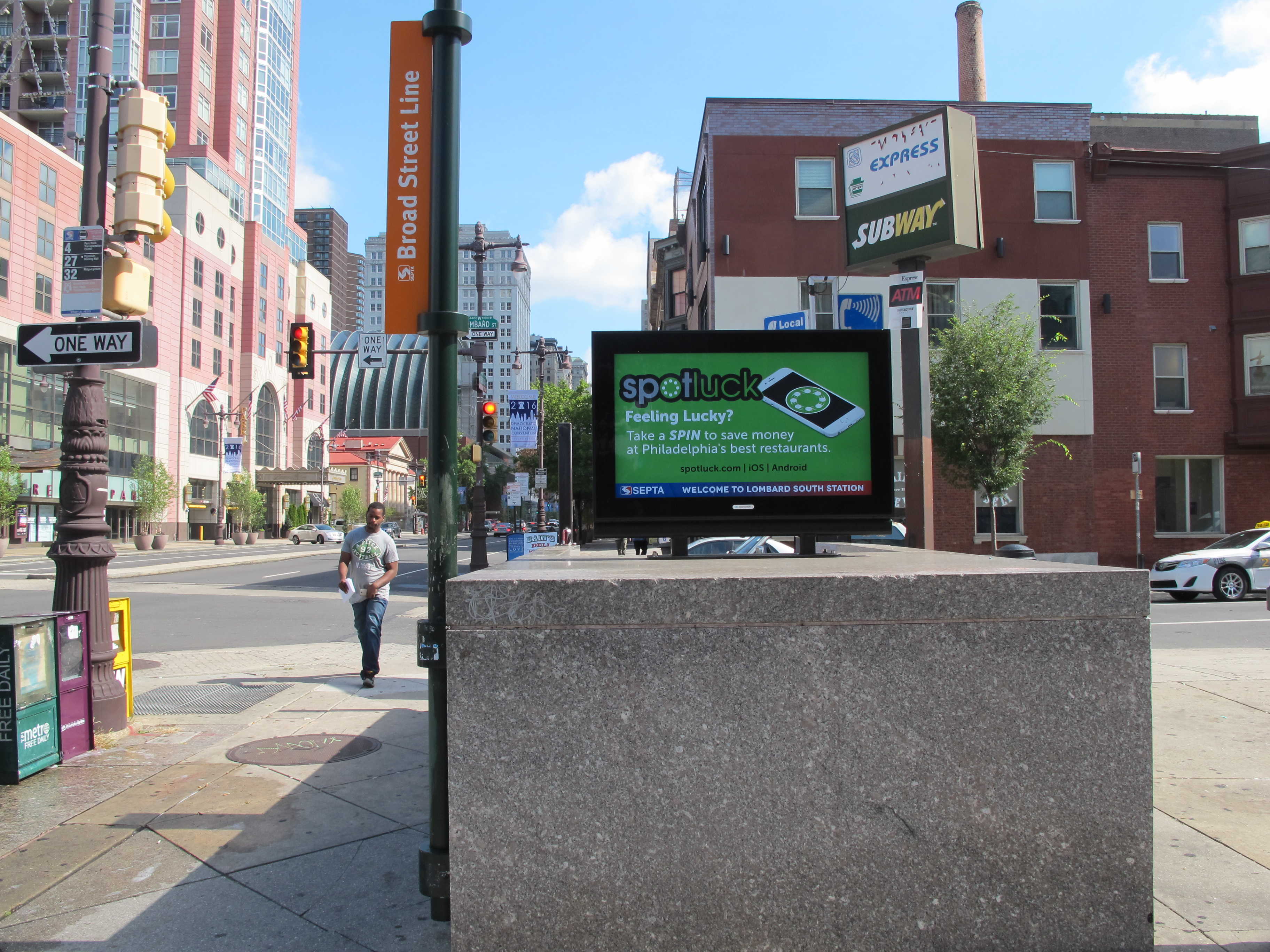Art Commission approves rehab of 5th Street El station, denies digital displays at SEPTA entrances
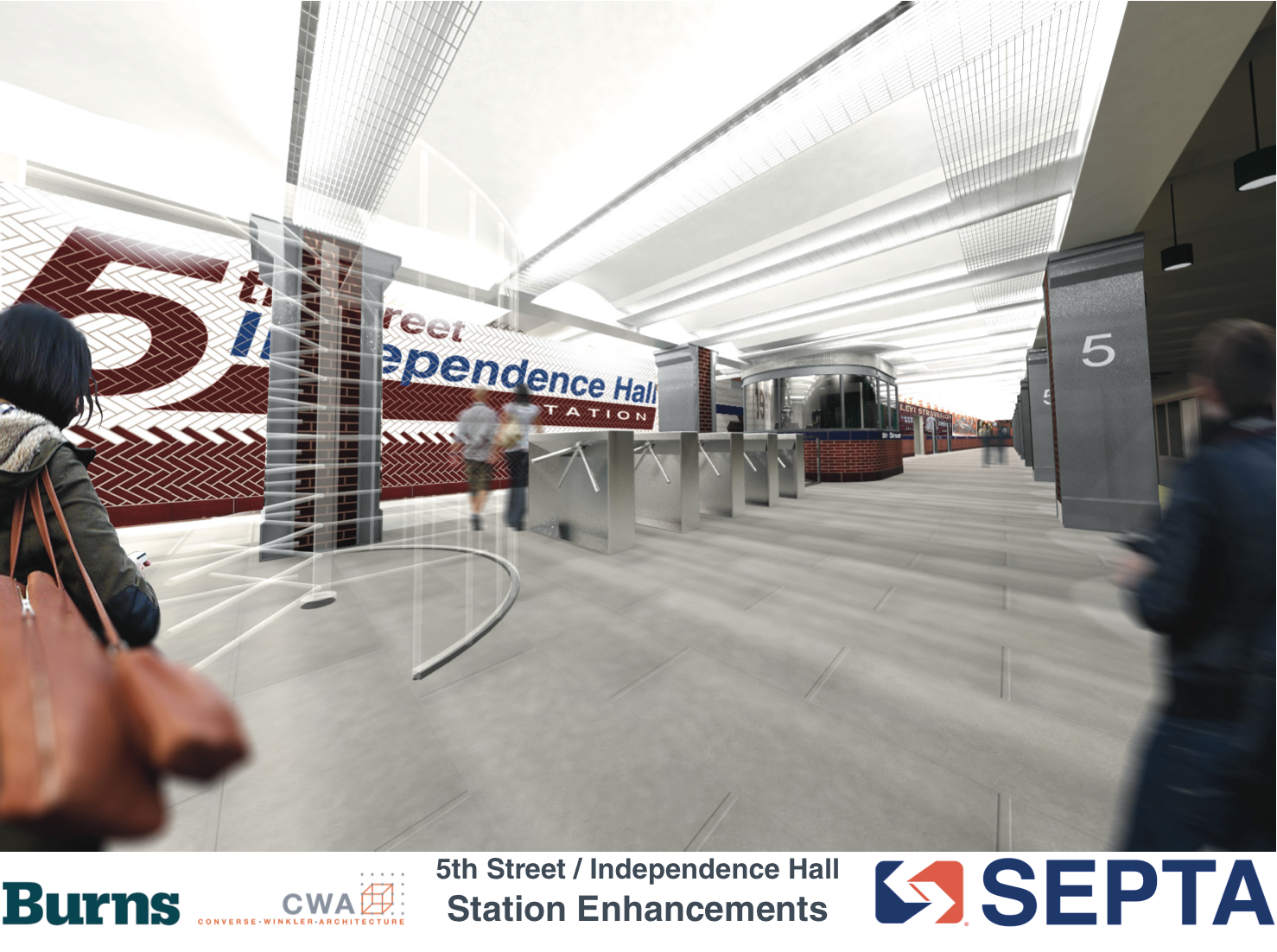
SEPTA is not only renaming the 5th Street Station on the Market-Frankford Line, it’s giving the tired station its first major overhaul since the Bicentennial.
The project team presented revised conceptual plans to the city’s Art Commission last week, which aim refresh the station’s appearance, put it back into a state of good repair, modernize infrastructure, and solve water infiltration problems.
One of the project’s major goals is to provide a better gateway to historic Philadelphia. But the project team has taken a light touch.
“We’ve resisted a tendency to sort of Yankee Doodle-up the station,” said Peter Brown of Converse Winkler Architecture.
When asked by commissioners why the plans did not forge an especially strong design connection with Independence National Historical Park above, Brown reiterated that it took real restraint not to put “Liberty Bells all over the station.”
Commission chair Alan Greenberger said the commission also encouraged restraint in an earlier review.
Erica Antoine of The Burns Group said the design aims to do something simple that did not detract from the real history upstairs.
At sidewalk level the western entrances would have new, simple glass headhouses. The project team floated the idea of a fritted glass roof, which is created when a ceramic pattern is fused to the glass. The headhouses are designed to withstand a heavy load – from monumental snow to people climbing on top of them in the event of a parade or protest. The station’s gloomy passageways from these western entrances would also be daylit thanks to glass pavers set in the sidewalk.
At the southeast entrance at the National Museum of American Jewish History, Brown said modifications would help remove the remnants of the 1970s scheme and make modifications that with the work the museum’s work to wrap the nearest part of the entrance in granite. At the northeast corner, SEPTA is waiting to see what the former Wells Fargo Building’s new owner will do before adapting the station. New signage will be the biggest difference at that entrance for now.
The station’s corridors and platforms will be clad in dark red and white subway tiles laid in a herringbone pattern.
The northwest and southwest corners at 5th and Market Streets will have new curb bumpouts. Corners will also have more durable ADA ramps. New bike racks will be added above ground, there will be new multilingual signage to improve wayfinding, stairs down to the station will be remade, and old equipment will be upgraded. New infrastructure will also be added to support SEPTA Key.
The plan was granted final approval, except for the fritted glass pattern – commissioners wanted to see samples – and a forthcoming Art in Transit installation for the station. The public art component will go through a separate call for artists, and approval at Art Commission, but space for an artwork is tentatively being reserved at the platform level, on the wall above a band of signage.
SEPTA spokeswoman Kristin Geiger said via email that the last renovation of the station’s architectural finishes was completed in 1976, which means they have outlived their expected 30-year lifespan. Geiger said the station originally opened in 1908, was overhauled during the Independence Mall construction in the 1950s, and has been adapted through the recent addition of two elevators and modifications made when the National Museum of American Jewish History was built.
What we won’t see at SEPTA’s 5th Street/ Independence Hall Station is digital displays on the new entrances.
The Art Commission rejected the permanent installation of 42 digital outdoor displays proposed for SEPTA entrances as part of a public-private partnership.
During the papal visit last year, SEPTA and Intersection, an “urban experience company” that works in digital advertising platforms, piloted new digital displays installed at sidewalk level on transit entrances.
Jon Roche from Intersection explained that other big city transit systems, like New York’s MTA and Chicago’s CTA, have installed the same 55-inch LCD screens at subway entrances to show a mix of advertising, a scroll of real-time transit information, and public information.
“It’s a way for Philadelphia to stay current with the information age” and for the “millennial city,” argued attorney Carl Primavera, representing Intersection.
Intersection proposed mounting the LCD displays in two ways: on low pedestals on top of granite entry enclosures, like those seen on South Broad Street, and on bridge mounts on top of the metal fences surrounding entrances, like those leading to many El and trolley stops.
Mary Tracy, president of Scenic America and executive director of Scenic Philadelphia, argued against the installations. She argued that the locations would all require individual study to ensure they were in compliance with the Federal Highway Beautification Act and questioned whether these would increase auto crashes due to distracting drivers.*
Representatives from Society Hill Civic Association and Philadelphia Parks and Recreation contested locations adjacent to Independence National Historical Park and the memorial park planned for 22nd and Market, arguing these were inappropriate, and the commissioners agreed.
Commissioners saw the “bridge mounted” displays, which would perch above the metal railings around certain subway entrances, as unattractive and inelegantly resolved designs. Commissioner José Almiñana described this type of display as visual clutter, and asked they could be incorporated into the railing, closer to sidewalk level.
Roche said that would deviate from the standard arrangement negotiated with other cities, and that would affect his company’s ability to bundle Philly’s digital displays into the same “national program” of ad packages.
Intersection hoped the Art Commission would permit these 42 displays in time to install them before the Democratic National Convention later this month. But Commissioners were not persuaded.
“I find this to be rushed,” Almiñana said. There are “five days of convention then Philadelphia is going to have 15 years of signs.”
The Art Commission voted down a motion to install only the pedestal-mounted displays, and sending the bridge displays back to the drawing board. Commissioners instead voted against the whole package, 4-2, and asked for Intersection to come back with revised ideas.
* Disclosure: Mary Tracy sits on PlanPhilly’s Advisory Board.
WHYY is your source for fact-based, in-depth journalism and information. As a nonprofit organization, we rely on financial support from readers like you. Please give today.



